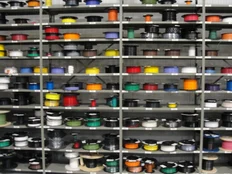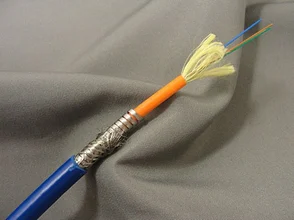In the design of custom cable fabrication and assemblies, safety is not just essential for product functionality and longevity, but the most important consideration to make certain that quality standards and protocols for electronic and electrical products are met. That custom cables serve a specific set of functions unique to each application is a given. But more than simply providing the required connectivity for a device, custom cable assemblies are integral to its overall performance.
Materials
 The key to functionality and performance in custom cable assemblies is the use of the highest quality material in their manufacture. Even the best designed cable assemblies made of poor or carelessly sourced material will consistently underperform and malfunction. Custom cables made from poorly sourced materials also present several safety issues which can have serious implications. Chief among these is the possibility of a short circuit within the assembly, which may produce electrical sparks that cause the release of toxic fumes and smoke, or lead to deflagration, combustion and electrical fire, and irreparable damage to the product and the facility in which it is housed.
The key to functionality and performance in custom cable assemblies is the use of the highest quality material in their manufacture. Even the best designed cable assemblies made of poor or carelessly sourced material will consistently underperform and malfunction. Custom cables made from poorly sourced materials also present several safety issues which can have serious implications. Chief among these is the possibility of a short circuit within the assembly, which may produce electrical sparks that cause the release of toxic fumes and smoke, or lead to deflagration, combustion and electrical fire, and irreparable damage to the product and the facility in which it is housed.
Components
The quality of a custom cable assembly then, is only as good as the quality of the components used in its manufacture. Quality is the best way to ensure the manufacture of safe products and to maintain safe equipment. Cable assemblies are numerous and vary for each type of assembly process, be it RF assemblies, Ethernet assemblies, fiber optic assemblies, power cable assemblies, custom wire harnesses, flat and ribbon assemblies or molded assemblies. Selecting quality components for custom cables are critical for an assembly’s safe operation. This especially includes conductors, sheathings, connectors, and shielding.
Conductors
Conductors used in an assembly are determined by the application and where it will be used. Though copper is the most popular material due to its conductive properties. Its malleability, ductility, and durability among other mechanical properties make it an ideal material for conductors. However, where the break strength of the conductor is at issue, copper alloys or copper clad steel may be better suited for an application to ensure safety.
Sheathing
A sheathing’s material properties are an important factor in ensuring the safe use of an application. The design of the sheathing may relate to the type of insulators the assembly requires or whether the application requires a thermoplastic or thermoset material.
Connectors
Connectors are another important function in the safe operation of cable assemblies. Connectors are vulnerable to stress and, as a result, are a likely failure point in assemblies. The choice of connectors relate to the type of signal to be transmitted. Designers can prevent termination failure by providing additional strain relief to alleviate points of stress in the assembly.
Shielding
 Correct shielding plays an important safety role in the design of custom cables. Shielding controls Electromagnetic Interference (EMI) and Radio Frequency Interference (RFI) of cables. EMI and RFI are potential problems for the safe function of any device. Interference can hamper transmission of signals, interfere with the operation of equipment, and cause malfunctions in electronic devices. Types of shielding to consider are dependent on the application requirements. There are several shielding options. Common choices include acrylic-based sprays for plastic electronic housings, metal foil, braided or, for the best protection from EMI, a combination of braid and foil shields.
Correct shielding plays an important safety role in the design of custom cables. Shielding controls Electromagnetic Interference (EMI) and Radio Frequency Interference (RFI) of cables. EMI and RFI are potential problems for the safe function of any device. Interference can hamper transmission of signals, interfere with the operation of equipment, and cause malfunctions in electronic devices. Types of shielding to consider are dependent on the application requirements. There are several shielding options. Common choices include acrylic-based sprays for plastic electronic housings, metal foil, braided or, for the best protection from EMI, a combination of braid and foil shields.
Testing
Perhaps two of the more significant factors in ensuring quality and safety is through testing and certifications. Electrical safety testing standards and processes rigorously test products to ensure 100% reliability. Such testing as the Hipot test, VSWR test, continuity and resistance testing can reveal defective or mis-wired cables instantly before assembly or installation into equipment. Testing further uncovers shorts and intermittent connections, and checks for contact isolation and resistance thresholds, each important to provide the manufacture of safe products of the highest quality.
Certification
Lastly, one of the more important considerations for guaranteeing quality products is noting what certifications a manufacturer has achieved. Certifications recognize not just a manufacturer’s achievements, but adherence to strict standards as established by international bodies or trade specific associations. They are earned, not dues or fee-based. Those related to custom cable fabrication manufacturers include ISO 9001, ITAR Certified (International Traffic in Arms Regulations), UL and CSA Registered, IPC-A-620, and WHMA Members (Wiring Harness Manufacturers Association).
 Of these certifications, two stand out—ISO and UL/CSA registered. ISO is the International Organization for Standardization and its ISO 9001 is the international standard that promotes and defines the criteria for quality management systems for companies, businesses, and organizations. It strictly focuses on customer-oriented quality management principles. UL/CSA registration stamp certifies the manufacturing process in making sure a company produces safe products that meet quality standards.
Of these certifications, two stand out—ISO and UL/CSA registered. ISO is the International Organization for Standardization and its ISO 9001 is the international standard that promotes and defines the criteria for quality management systems for companies, businesses, and organizations. It strictly focuses on customer-oriented quality management principles. UL/CSA registration stamp certifies the manufacturing process in making sure a company produces safe products that meet quality standards.
Safety is the top priority when manufacturing custom cables. Sourcing the highest quality materials are key to ensure products are safe. In short, quality materials produce quality products that will reduce the risks of more significant issues that could lead to release of toxic fumes or cause electrical fires.


